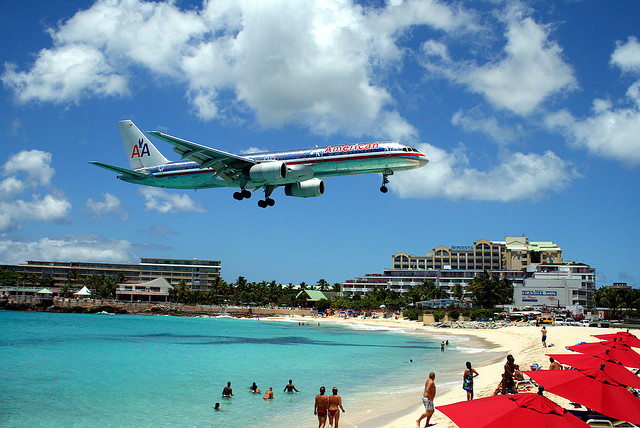
Tourism can be a real boon to a local economy, propping up otherwise sleepy towns with an influx of cash. But as with many things, there’s a point where “just enough” becomes “too much.” Popular tourist towns with a few thousand residents can practically burst under the pressure of peak season. They’re like an experiment in population growth and decline repeated on an annual basis, and the strain can quickly become evident.
Perhaps nowhere has this experiment been more intensive than on the islands of the Caribbean. Between 1970 and 2010, the number of tourists soared from 4.6 million to 17.3 million, and that number doesn’t include the 18 million cruise passengers that traipsed around an island for an hour or three. It’s a staggering increase, and one that brings to mind the growth trends that populations exhibit as they near carrying capacity, the limits of their habitat.
Indeed, tourism for a particular region generally follows the same S-shaped—or logistic—curve. The initial number of visitors is a slow trickle, but once the place is “discovered,” the number of arrivals soars. Eventually, prices rise, the environment suffers, and crowding becomes an issue, all of which discourage further growth. Unless a new attraction is built or another natural wonder discovered, the annual number of tourists will either level off if appropriately managed or decline if not.
Carrying capacity for tourism is similar in some ways to ecological carrying capacity and different in others. Ultimately, physical resources limit both population and tourist levels. A dearth of land, shortage of food, or decline in water quality and availability will quickly put the brakes on both types of growth. But for tourism, cultural resources are also a concern.¹ Unique cultures that once attracted visitors can become spoiled or diluted, losing the draw they once had.
Some islands in the Caribbean may be in danger of soon reaching or exceeding their carrying capacities, according to a 2005 study. For example, Bermuda, St. Kitts, and Barbados, to name a few, had relatively high tourist densities and low increases in arrivals—the classic tapering off of the S-curve as the limit of carrying capacity approaches. The authors did discover a few anomalous islands that may show the way for the others. The Caymans, for example, have both high tourist densities and growing arrival rates, which the authors attribute to modern resorts and tourism development that limits environmental degradation.
Since that study, annual tourist arrivals for the entire Caribbean have been leveling off. While the number of cruise passengers shot up from 11 million to 17.3 million between 1996 and 2010, traditional arrivals only rose by about 600,000. While cruise ship passengers may substitute for other vacationers in some ways, they are not equal replacements. Their stays are shorter—typically only a few hours—meaning they spend less. And while cruise ships may require fewer local resources, they leave other environmental burdens, including sewage pollution from older ships and problems resulting from harbor dredging.
I never would have suspected that there could be a plausible link between limits on tourist capacity and ecological carrying capacity, but the comparison seems appropriate. Tourists’ demands are similar to those of their every day life, only ratcheted up a few notches. On vacation, service is expected where it otherwise wouldn’t be, and consumption is often higher (how many people wash their towels on a daily basis when at home?). Vacationers are experimental treatments of sorts, testing the limits of their destination’s infrastructure and environment.
- Though you could argue that a lack of culture could, in a way, lead to a decline in population growth as well. ↩
Source:
Robert N. Thomas, Bruce Wm. Pigozzi, & Richard Alan Sambrook (2005). Tourist Carrying Capacity Measures: Crowding Syndrome in the Caribbean The Professional Geographer, 57 (1), 13-20
Photo by ToddonFlickr.